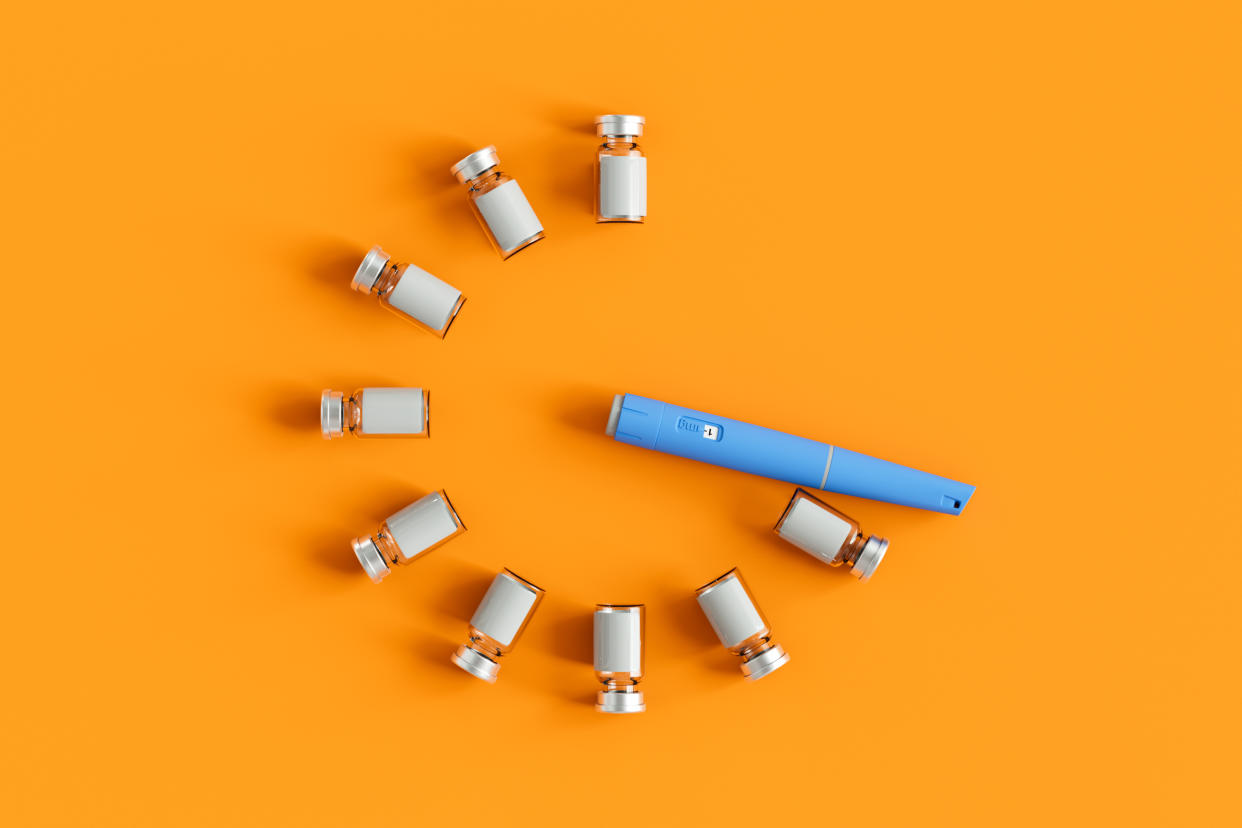How Ozempic Is Changing Diabetes Treatment

For more than 20 years, Betsy Chadwell carried her insulin pens everywhere. Day in and day out, she carefully calibrated the doses needed to keep her Type 2 diabetes in check. “Every meal, and every morning and every night — it controls your life,” she said.
In late 2021, she started on the diabetes drug Ozempic. Within months, she was able to stop taking the short-acting insulin she typically took before each meal altogether, and she has substantially reduced the dose of long-acting insulin she uses daily. Scaling back on insulin has given her a sense of freedom, she said. She still uses a continuous glucose monitor to track her blood sugar, meticulously watching for slumps and spikes, but even as she took less insulin, she said, Ozempic has helped keep her glucose levels more under control.
Millions of Americans rely on some form of insulin, a lifesaving drug that has long been a mainstay of diabetes treatment. But it can also be a burden to patients like Chadwell, who must juggle different formulations and doses, and often must have insulin on hand at all times.
Sign up for The Morning newsletter from the New York Times
“I really feel for those patients, because you can never stop having it in the back of your mind,” said Dr. Scott Hagan, an assistant professor of medicine at the University of Washington who studies obesity.
But in recent years, Ozempic and a similar drug, Mounjaro — both weekly shots that can lower blood sugar, in part by mimicking a hormone that stimulates insulin production — have offered patients an enticing new option to try managing their Type 2 diabetes without relying as heavily on insulin.
And drugmakers are examining other ways these drugs might work alongside insulin: Novo Nordisk, the company that makes Ozempic, is studying a new drug called IcoSema, a weekly shot that combines insulin icodec (an ultra long-acting version of insulin) and semaglutide, the compound in Ozempic.
While it hasn’t yet published the full results, Novo Nordisk has said that promising but preliminary data from two trials suggest IcoSema might lead to better glucose control than insulin or semaglutide alone. Previous trials have suggested that people taking semaglutide or tirzepatide, the substance in Mounjaro, alongside insulin had better blood sugar control and lost more weight than those taking insulin alone.
Patients who are already using these drugs in tandem often do so with the hope of lowering how much insulin they take, or weaning off it altogether. Hagan said patients are often eager to get off insulin, partly because it can be such a logistical pain, and partly because the medication can lead to weight gain.
There is no standard guidance on how to dose Ozempic and insulin together, though, so doctors said they are learning in real time how to manage patients on both medications. “It’s kind of a moving target,” Hagan said. Lower a person’s insulin dose too quickly, and their blood sugar might rise out of control.
“You don’t just lower the insulin on everyone, or you don’t just wait and see what happens for everyone,” said Dr. Andrew Kraftson, a clinical associate professor in the division of metabolism, endocrinology and diabetes at Michigan Medicine.
If the medications lower blood sugar too dramatically, it could fall to dangerously low levels, known as hypoglycemia. Taking drugs such as Ozempic alongside insulin raises the risk of this happening, said Dr. Janice Jin Hwang, the division chief of endocrinology and metabolism at the University of North Carolina School of Medicine.
When she tells patients about this risk, she said, she also explains early signs of hypoglycemia: palpitations, shaking, sweating, dizziness and intense hunger. People experiencing severe hypoglycemia can have seizures, lose consciousness and struggle to walk, think or see clearly.
“We do everything we can to try to prevent that from happening,” she said.
She keeps particularly close watch on patients as they gradually increase their doses of Ozempic or Mounjaro. She sees them more frequently, makes sure they monitor their blood sugar levels closely and adjusts insulin doses as needed.
Dr. Padmaja Akkireddy, an endocrinologist at Nebraska Medicine, said that every time a patient increases their dose of Ozempic, she checks whether their insulin dose should change, too. These calculations can become even more difficult when patients taking Mounjaro or Ozempic struggle to get their next dose, whether that’s because there’s a shortage — as there often is — or because their insurance coverage lapsed.
With careful monitoring, though, Akkireddy said that most of her patients have been able to lower their insulin doses after starting Ozempic, and some have been able to go off insulin entirely. Not everyone will be able to go off the drug, experts said — some will always need it to keep their blood sugar in check.
But “my hope,” Hagan said, “is that in 10 years, we have many fewer patients who are needing to take insulin.”
c.2024 The New York Times Company

